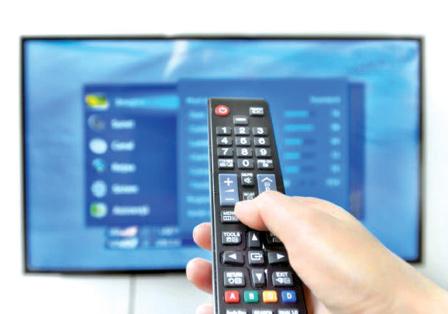You are here
TVs are getting very smart
By Jean-Claude Elias - Nov 04,2020 - Last updated at Nov 04,2020

The new smart TV I just bought myself is trying to outsmart me. In a nice way.
Considering the evenings we are spending at home these days, getting a new set to replace a 12-year-old one made sense to me recently. The vendor was in short supply last September, confirming the unusually high demand in Jordan for such items. He promised the delivery of a “great new model” in October, and he kept his promise.
The actual brand of the set is irrelevant here, suffice to say that it is the latest generation of smart TVs, one that was manufactured just a few months ago. The user manual — I correct that, the e-manual — is 188-pages long. The size of the manual and more importantly its contents, say a lot about what technology is doing to us.
Needless to say, that the e-manual was not supplied as a hard copy document but was to download on the web, and is also available online on the TV screen itself. This has been the trend for the last few years, whether your TV is smart or not.
The functionalities and the features are overwhelming, even for a tech-head or someone who enjoys IT. The e-manual of my powerful laptop computer is about half of the TV’s. Which easily leads us to the clear conclusion that smart TVs are now more like full-fledged computers, and that dummy sets belong to the past. We have turned that page for good.
Smart TVs are computers in their own right, just like smartphones are. This means that you have to feel comfortable with intricate menu layouts, IT terminology, settings, networking, apps, wireless connectivity and the like. The old notion of traditional TV is gone for good. “Old” is understood here as “before 2010!”
If you are not comfortable with the new TV technology, you can still watch simple satellite broadcasts and stick to that. But this would be ignoring 90 per cent of what your smart TV set can do for you. The built-in Internet features, like Netflix, YouTube, and Apple TV, to name only three of them, make a huge difference.
To navigate through the menus, the settings and the options, the hand-held remote-control unit is just not friendly enough. A real, full-size keyboard and a mouse are a must. Yes, computers again. Virtually all new smart TVs allow to easily connect a keyboard and a mouse, wirelessly or through regular USB cables. Performing a search on YouTube or Netflix without a keyboard, just by using the remote-control unit, would be frustrating and would take out the pleasure.
Fortunately, even if you are not particularly tech-savvy, a good part of the whole concept is intuitive — up to a certain point that is. Perhaps the trickiest, the least intuitive part is the way your smart TV would connect to the home router and through it automatically discover and talk to all the other connected devices like smartphones, tablets, laptops computers and Bluetooth speakers.
Just after the new TV was installed, set up and ready to go, one member of the family, upon tried to play music on his smartphone, was prompted on the screen: “Do you want to playback the music on the [brand] TV or on your phone?” All devices connected to the router were communicating and displaying an astonishing range of possibilities.
As for me, and without pressing any button, clicking any mouse, or asking the TV to do anything at all, I was treated on the large screen with this invitation that popped-up all of a sudden: “A music collection was found on your DLNA-enabled [brand] computer, do you want to play it here?” It was trying to outsmart me, obviously. Not only was my laptop discovered by the TV on the home network, via the router, but all the functionalities that could be shared between the multiple devices were already activated and ready to operate.
Understanding the basics of networking has become a critical notion. It should be part of any educational system, not just to be able enjoy TV, music, or video, but also to make a better use of remote learning. How many families are still struggling with some aspects of the network to help their children do their e-homework?
Related Articles
Networking is a concept that is far from being applied “only” to bringing to your home the Internet, arguably the largest network of them al
The days are gone where one device would connect to the web via a simple modem supplied by the telecoms. Now a WiFi router has become a must in any home that has an ADSL subscription. Installing and managing it can be a breeze or a nightmare. It all depends on what you expect from it and to which extend you are, or are not, tech-minded. In any case, however, the device will prove extremely useful.
Chances are that you have a network router at home. If you have Internet it almost automatically means that you do have a router.











